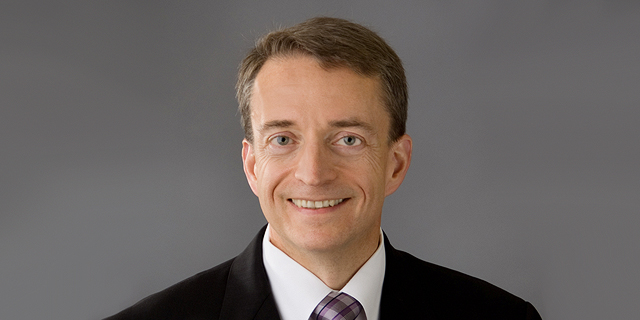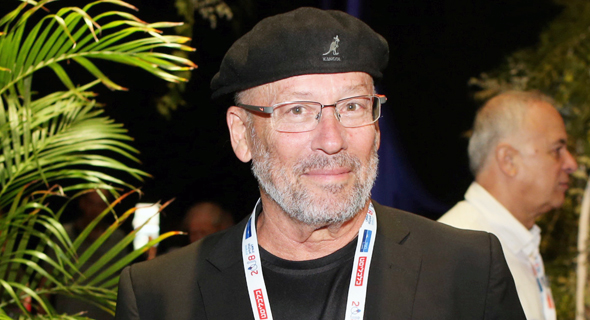
Intel’s incoming CEO's objective: Putting the company back on track
Pat Gelsinger is taking over a company whose poor business decisions over the past decade have led to failure, but former Intel-Israel executive Mooly Eden has faith that he will set the company back on the right track
Raphael Kahan | 13:53, 14.02.21
Intel’s incoming CEO Patrick Gelsinger is set to take the helm on Monday. Although he was only officially appointed a month ago, this isn’t the first time he has been offered the position. Since 2013, his name has come up as a leading candidate, but Gelsinger had refused and preferred to stay on as CEO of VMware, where he managed to double the company’s size. Now, he’s getting a whole different Intel than in 2013, one that may not be as focused.
The chip making giant’s hazy future is the result of a decade of poor or undecisive business decisions. There is hardly a sector that the chip giant hasn’t tried entering: computer processors, smartphone processors, computer manufacturing (such as the NUC line of mini PCs), wearables, drones, autonomous cars (Mobileye), navigation (Moovit), sporting event photography, cloud computing, network cards, modems, graphics cards, drivers and software, memory chips, cybersecurity, artificial intelligence, big data, virtual reality, and augmented reality. Intel has tried its luck in almost every field, and that might be the root of the problem.
It’s difficult to say when exactly Intel lost its way, but the last CEO to lead the company with a relatively clear vision was Paul Otellini, who left in 2013. His tenure was defined by structural changes that were designed to provide Intel with long term growth, expand its server market segment, and maintain its revenues during a worldwide recession. His other achievements included signing contracts with prominent customers, such as Apple for operating its Mac computers with Intel chips, partnerships and strategic acquisitions which expanded its presence in the fields of security, software, and mobile communications. Otellini was also responsible for one of Inetl’s biggest embarrassments, one that it is still attempting to recover from today: missing out on the mobile market.
Firing in all directions
Otellini was replaced by Brian Krzanich, then-chief operating officer. Krzanich’s period was probably one of the worst in the company’s history. It was complicated by a number of attempts to enter different fields that it hadn’t previously been active in, such as drones or wearables, which weren’t really related to the company’s core activity. In addition, its disregard of the rising mobile market, left the sector to its competitors at Qualcomm, Samsung, and Arm Ltd.
Krzanich was a hasty appointment. The board had stubbornly tried to convince external candidates like Gelsinger or Senjay Jha (former CEO of Motorola Mobility and COO of Qualcomm) to head the tech giant as Otellini’s resignation date approached. When all attempts failed, Krzanich’s appointment was swiftly approved. Intel somewhat lost its way, since Krzanich didn’t have a clear-cut vision or strategy. In hindsight, Krzanich’s time at Intel was characterized by many attempts to fire in multiple directions out of fear that it would miss out on the next big thing just like it did with the mobile market.
One of the most prominent examples was Intel’s failure to enter the cybersecurity market. Krzanich inherited from his predecessor the company’s failure to fully implement cybersecurity company McAfee, which it acquired in 2010. McAfee has now become a warning sign for Intel’s tendency to make large, well-publicized acquisitions ($7.7 billion) and turn them into embarrassing failures. A decade ago the cybersecurity company was at a turning point in the industry when it created anti-virus software and a payroll protection that included digital infrastructure and smart products. But after Krzanich tried turning MacAfee into Intel security and incorporating it into Intel’s DNA, Intel realized that cyber was a wholly separate business. Otellini acquired McAfee because he wanted the company to assist with the development of Intel’s internal processors, but it turns out that wasn’t something McAfee knew how to do. After an infinite number of attempts to adapt McAfee to Intel’s corporate culture and strategy, the company was sold to private-equity investors in 2016, and Intel was left with only a minority holding (49%). A few months ago, it was reported that McAfee was considering going public again which would result in Intel further reducing its holdings.
Intel made an additional pricey gamble in the field of smart transportation. Intel’s main acquisition was of course Israeli Mobileye (for $15.3 billion in 2017). Mobileye is still believed to be one of its most promising companies, but three years after the acquisition, that promise has yet to be realized. While the rollout of autonomous cars continues to be postponed, in the meantime Mobileye is content with producing chips for smart car manufacturers. Since its parts aren’t being purchased by Tesla - the leading company in the sector - it isn’t clear, when, if at all, it will return its investments.
It seems that its acquisition of Habana Labs was actually a good gamble for Intel. The company develops artificial intelligence chips that are used for machine learning computing. Intel offers them as competition to Nvidia’s products.
Gelsinger’s vision for Intel hasn’t yet been fully revealed, but some core parts that were made known, such as the focus on chip manufacturing, control chips, cloud computing, and data centers which generate significant revenue for Intel. Gelsinger’s advantage over outgoing-CEO Bob Swan is that he is a tech guy, an engineer, but also a person who led another tech company, VMware, to become an industry leader.
“He’s a tech whiz,” said Mooly (Shmuel) Eden, the former President of Intel-Israel and a former senior vice president at Intel Corp., who left the company in 2015. “Andy Grove (one of Intel’s founders and CEOs) discovered him and mentored him, he knows Intel’s hardware and technology first hand, and after his time at VMware, he’s also familiar with the world of software.” The fact that Gelsinger is acquainted with both worlds - namely the needs of both hardware and software customers - is a relatively rare combination in the tech world where most industry executives either focus on one side or the other. Very few have managed to successfully transition between them, aside from Steve Jobs, who knew how to ensure that the combination of software and hardware in Apple products fit his vision.
Gelsinger knows a lot of Israelis
Most likely, his vision will become clear soon, but probably won’t be fundamentally different from what has led Intel toward its success so far, namely controlling its development and production in the field of computing. It will be interesting to see which operational strategy he chooses to return Intel to its natural spot. “During a period when the tech industry is undergoing tectonic changes, including Intel as a multinational company that lost some of its market share, I think that if there’s someone capable of switching directions it’s Pat, and I’m not someone who easily dishes out compliments,” Eden said, echoing many similar sentiments over the past month by former and current company employees, journalists and analysts, since it was made known that Gelsinger would be taking the helm as CEO.
That said, Gelsinger is considered a very tough figure in the industry with high demands from his subordinates. “He isn’t a simple person, and he knows how to make demands,” said Eden. “He knows a lot of people in Israel. But I don’t want Intel Corp. to only be friendly with Intel-Israel because of his warm relations with people here. It should be because Israeli-made products are excellent.” Eden also believes that Gelsinger won’t hesitate to get rid of divisions that don’t yield high performance, “he might even sell them to fund new acquisitions that the company will need to make.”
Another factor on the agenda is the demand by some of Intel’s investors that the company split its operational and manufacturing activities. However, Eden estimates that isn’t something that will happen in the near future. “I don’t think that Intel is losing money on its manufacturing operations,” he explained but believes that the company may consider such a move depending on whether it succeeds in leading the manufacturing industry or not. Extending production to external customers is also possible, he said, since “it’s been done in the past.”
If Gelsinger gives you a call, will you return to Intel?
“He’s the right person at the right time, but I don’t think it’s relevant now, if it becomes relevant, then I’ll consider it. He’ll bring along some of his people. I didn’t hold back and sent Pat my blessing, he isn’t someone who’s in it for the money and didn't come to Intel to be rich, but rather because he believes he's part of the company’s heritage.”
